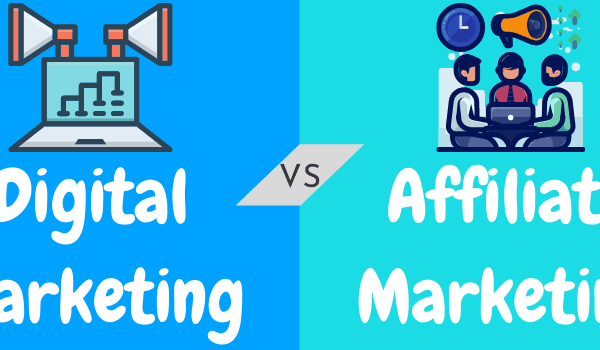
How to Measure ROI of Your Performance Marketing Campaigns?
Introduction
Performance marketing has become a vital aspect of any business’s marketing strategy. The ability to measure the return on investment (ROI) of these campaigns is essential for businesses to justify their spending and make informed decisions in future strategies. Measuring ROI can be challenging, but it is necessary for businesses to know if their performance marketing campaign was effective.
How & where to begin?
The first step in measuring ROI is understanding what you are trying to achieve with your performance marketing campaign. Are you looking to increase sales or generate leads? Once you have defined your goals, determining the key performance indicators (KPIs) that will help track progress towards those goals is crucial.
For instance, If your goal is lead generation from Facebook Ads, then KPIs would include click-through rate (CTR), cost per click (CPC), conversion rate by landing page, cost per acquisition(CPA).
On the other hand, If the aim of the campaign is brand awareness through display ads then KPIs may consist of impressions/ reach achieved by ad placements and viewability metrics like viewable impressions(VIs)
Once KPIs are finalized, implementing tracking mechanisms needs careful attention. This setup involves affiliate pixels or cookies placed on landing pages that enable both click-based and impression-based attribution across all channels including ad networks & social media platforms
Attribution models play a crucial role in calculating ROI as these outline how credit should be distributed among different touch points along customer journeys before conversions occur.
Methods to Measure ROI
There are several methods available for measuring ROI; some commonly used ones include:
1. Return on Ad Spend (ROAS)
ROAS measures how much revenue was generated compared to advertising spend during a particular period.It can be calculated using simple formula – ROAS = Revenue / Advertising Cost * 100%
For example: If $5000 were spent on Facebook Ads which resulted in $25000 revenue,the ROAS would be 500%
2. Cost Per Acquisition(CPA)
Cost Per Acquisition calculates how much it costs a business each time they acquire a new customer through advertising efforts.
Formula – CPA= Total Ad Spend /Number of Conversions
For example:If total ad spend amounts up-to $2000 with five conversions acquired through Google search ads,Cost Per Acquisition stands at $400
3. Lifetime Value(LTV)
Lifetime Value represents total revenue generated over time by individual customers who came through paid advertisements.By comparing LTV against Customer acquisition cost(CAC),one can correlate whether paid campaigns contribute substantially towards sustainable growth.
Formula : LTV = Average Annual Sales x Gross Margin % x Customer Lifespan(years).
CAC = Total Cost Incurred To Acquire Customers/New Customers Acquired
For example: Let’s assume average annual sales/customer =$10k,Gross margin percentage=50% & customer lifespan equals 4 years. If we have spent around $30k over past quarter acquiring new customers via Paid Search, LTV would stand at($10k*50%)*4=$20k.
Now we divide $30k/5(for five new customers acquired),which gives us CAC=$6k.The ratio between LTV/CAC comes out as ($20K/$6K)=3x.This implies our paid search campaigns deliver positive returns worth three times more than what we invested.
If you’re investing in performance marketing campaigns, you need to understand how to measure their return on investment (ROI). After all, the goal of any marketing campaign is to get a positive return on your investment. It’s not enough to simply know how much you’re spending; you also need to know what kind of return you’re getting.
4. Marketing Efficiency Ratio (MER)
The Marketing Efficiency Ratio (MER) is a key metric used to measure the effectiveness of marketing campaigns. The MER helps businesses understand how much revenue is generated for each dollar spent on marketing efforts.
To calculate the MER, the total revenue generated from a marketing campaign is divided by the total marketing expenses incurred during that campaign period. The resulting figure represents the MER, which shows the return on investment (ROI) for the marketing campaign.
A higher MER indicates that the campaign was more successful in generating revenue, while a lower MER suggests that the campaign was less effective in terms of revenue generation. Monitoring the MER over time helps businesses identify trends and adjust their marketing strategies accordingly.
Overall, tracking the MER is a crucial step in measuring the ROI of performance marketing campaigns and improving their effectiveness.
5. Weighted CPA
Weighted Customer Acquisition Cost (CAC) is a metric used to calculate the cost of acquiring each new customer for a business. This metric takes into account the different channels used to acquire customers, and assigns weights to each channel based on their relative importance and effectiveness in driving customer acquisition.
For example, if a business uses Google Ads, Facebook Ads, and email marketing to acquire customers, the Weighted CAC formula would assign different weights to each channel based on their individual costs and conversion rates.
By doing so, this metric helps businesses to better understand the true cost of acquiring a customer, and enables them to optimize their marketing spend by focusing on the channels that are most effective in driving customer acquisition.
So, tracking Weighted CAC is a crucial component of measuring the ROI of performance marketing campaigns, as it provides a more accurate picture of the true cost of customer acquisition and enables businesses to make data-driven decisions about their marketing spend.
I) Blended CAC
Blended CAC (Customer Acquisition Cost) is a common method used to measure the cost of acquiring a new customer through a combination of different marketing channels.
The blended CAC formula takes into account the total amount of money spent on all marketing activities, such as social media ads, email campaigns, and paid search, and divides it by the total number of new customers acquired.
Blended CAC provides a high-level view of the overall cost of customer acquisition and can be useful for comparing the effectiveness of different marketing channels. However, it may not be the most accurate method for measuring the ROI of specific marketing campaigns as it averages out the costs across multiple channels.
II) Incremental CAC
On the other hand, Incremental CAC measures the cost of acquiring a new customer from a specific marketing campaign. Incremental CAC is calculated by subtracting the number of new customers acquired through organic channels, such as word-of-mouth or direct traffic, from the total number of new customers acquired through a specific marketing campaign.
The cost of the campaign is then divided by the number of new customers acquired through that campaign.
Incremental CAC provides a more precise way of measuring the ROI of a specific marketing campaign, as it takes into account only the costs and results of that campaign. It can also help identify which marketing campaigns are generating the most ROI and where to allocate marketing budgets in the future.
When it comes to measuring the ROI of performance marketing campaigns, both blended CAC and incremental CAC can be useful. Blended CAC provides an overall view of the cost of customer acquisition across all marketing channels, which can be helpful for making high-level decisions about marketing budgets.
Incremental CAC, on the other hand, is more granular and can help identify which specific marketing campaigns are generating the best ROI. Combining these two methods can provide a comprehensive view of the cost of customer acquisition and help businesses make informed decisions about their marketing strategies.
Tips for Measuring the ROI of Your Performance Marketing Campaigns
Measuring the ROI of your performance marketing campaigns can be a challenge, but it’s essential if you want to make sure your marketing budget is being well spent. Here are some tips for measuring the ROI of your performance marketing campaigns.
1. Measure Your Conversions
The most important metric for measuring the ROI of your performance marketing campaigns is the number of conversions. A conversion is when someone takes a desired action after seeing your ad, such as signing up for a newsletter, making a purchase, or downloading an app. You should track each conversion, as well as the cost per conversion. This will allow you to calculate the ROI of each campaign and make informed decisions about which campaigns are working and which ones aren’t.
2. Track Your Clicks
In addition to tracking conversions, it’s also important to track the number of clicks on your ads. This will help you determine how many people are seeing your ads and if they’re actually engaging with them. If your click-through rate is low, you may need to tweak your ad copy or targeting to make it more effective.
3. Monitor Your Cost Per Acquisition (CPA)
The cost per acquisition (CPA) metric measures how much it costs you to acquire a customer through a specific campaign. This is an important metric for understanding the ROI of your campaigns and making sure you’re not spending too much to acquire customers.
4. Analyze Your Customer Lifetime Value (CLV)
Customer lifetime value (CLV) measures the total value that a customer brings to your business over time. By measuring CLV, you can get an idea of which campaigns are bringing in high-value customers and which ones are bringing in low-value ones. This can help you focus your efforts on campaigns that bring in higher-value customers and maximize your ROI.
5. Monitor Your Brand Awareness
Finally, it’s important to monitor the impact that your campaigns have on brand awareness. Performance marketing campaigns can be effective in raising brand awareness and driving more traffic to your website or store. You should track metrics such as website visits, social media engagement, and shares to get an idea of how effective your campaigns are at increasing brand awareness.
Final Words
Measuring the ROI of your performance marketing campaigns is essential if you want to make sure you’re getting a good return on your investment.
Ready to work smarter, not harder? Try Zavops today.







